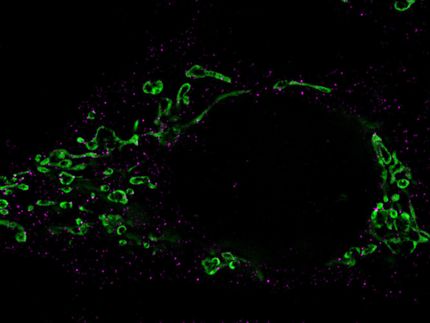Herpes virus decoded using new methods
A comprehensive systems biological analysis of the herpes virus genome has caused some surprises
Advertisement
The genome of the herpes simplex virus 1 was decoded using new methods. Hundreds of previously unknown gene products were found. The virus causes lip herpes, but can also be life-threatening.

Symbolic image
pixabay.com, CC0
Until now, scientists had assumed that there are about 80 so-called open reading frames (ORFs) in the genome of herpes simplex virus 1 (HSV-1). These are the locations in the genome where the information in the DNA is read and translated into proteins. It is now clear that there are a lot more – namely 284 ORFs. These are translated from hundreds of novel viral transcripts, which have now also been identified.
This is what research groups from Julius-Maximilians-Universität (JMU) Würzburg in Bavaria, Germany, and other institutions report in the journal Nature Communications.
"The new findings now make it possible to study the individual genes of the virus much more precisely than before," says Professor Lars Dölken, head of the JMU Chair of Virology. He was in charge of this project together with Florian Erhard, JMU junior professor of systems virology.
Several institutions involved
The research team used a broad spectrum of the latest systems biology methods for the study. In addition to JMU, the Max Delbrück Center for Molecular Medicine in Berlin, the University of Cambridge in England and Ludwig-Maximilians-Universität of Munich were involved.
The data are not only important for a better understanding of the virus itself. They also have concrete implications, for example for the development of HSV-1-based oncolytic viruses. These are viruses that are used in immunological therapies of certain tumor diseases, such as malignant melanoma.
Facts about herpes simplex virus 1
Herpes simplex viruses of type 1 (HSV-1) are known to many people as the cause of unpleasant itching cold sores. An infection with this virus type can also have serious consequences. For example, HSV-1 can cause life-threatening pneumonia in patients in intensive care units. And in healthy people, it can cause encephalitis, which often leads to permanent brain damage.
Once infected with the virus, a person will retain it for the rest of his or her life: herpes viruses permanently nestle in body cells. There they usually remain inconspicuous for a long time. Only under special circumstances, such as a weakened immune system, they become active again.






















































